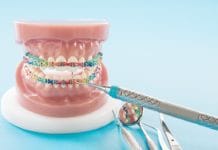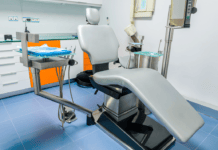If COVID-19 wasn’t enough to cause practice disruption, the shortage of registered dental hygienists certainly is. The U.S. Bureau of Labor and Statistics reports that, as of 2019, that there are 226,400 dental hygiene jobs in the U.S., with a projected increase in demand of 13,300 by 2029.1 This article explores the current status of the hygienist shortage as well as ways to improve workplace cultures, hiring strategies, and onboarding experiences to hire and retain talent.
The pandemic has reduced the number of hygienists who are willing to seek employment. Since the onset of the pandemic, numerous surveys conducted through the Health Policy Institute (HPI) have analyzed the impact that COVID-19 has had on dentists and dental practices (a few have focused on the specific impact on dental hygienists). The American Dental Hygienists’ Association partnered with the American Dental Association for a single survey that incorporated 4,804 results from dental hygienists, and Today’s RDH put out a survey that gleaned information from 2,602 responses.
According to HPI data, the COVID-19 pandemic has led to an 8% reduction in current dental hygienist employment.2 Some states are finding this shortage is on top of a shortage that existed before COVID-19. The shortage is so significant in some states that dentists are hiring associates to provide hygiene care. According to the Health Policy Institute data, the supply of dentists year over year has steadily increased. Yet, Associates were slow to be rehired after practices opened back up following state-mandated COVID-19 closures.6 In fact, employee dentists have seen the biggest lingering employment effect.7 The same is not true for dental hygienists who have voluntarily left the field.
Where did the hygienists go? The HPI survey points to a voluntary reduction according to 59.1% of hygienists. Today’s RDH posted results of their COVID-19 survey revealing that 9% of hygienists left the field for the following reasons:5
- Retired early due to the pandemic (24%)
- Did not feel safe working clinically “at this time” (21%)
- Laid off or fired due to the pandemic (10%)
- Employer did not provide PPE or safe work environment (4%)
- Needed to stay home with children (3%)
A real, or in some cases perceived, shortage of PPE supplies caused a higher level of concern in transmission risk of COVID-19, which is also contributing to the current exodus from the field.
Is there a shortage of dental hygienists or a shortage of quality, safe, and supportive practices for hygienists to work in? A quick Google search of “dental hygienist shortage” will reveal articles posted over the last couple of decades that are addressing this shortage.
Some practices have a hard time finding a hygienist in a robust market with ample candidates. We are certainly not in a robust hiring market. However, some practices hold onto their talent longer than others.
Hygienists have left the field for a variety of reasons over the years, including feeling unsatisfied with the work environment or culture, physical and ergonomic issues, a lack of appreciation, poor leadership, unreasonable schedules, and, most recently, the impact of COVID-19. Historical shortages coupled with the additional impact COVID-19 has had generated the perfect storm resulting in a tighter than ever job market. Read further to learn ways to sweeten the deal when hiring, and retaining, top hygiene talent.
The Great Pause
For many, COVID-19 provided an opportunity to reflect on current work-life balance equations and found the “life” side not weighted heavily enough. According to the Harvard Business Review, burnout worsened during the pandemic. New research showed the depths of burnout while Jennifer Moss urged employers to “focus on organizational solutions such as giving employees a sense of purpose, decreasing their workloads, making it safe to talk about their mental health at work, becoming a more empathetic manager, and facilitating connections with others.”4
Are these philosophies taking place in dental practices? Work cultures may need to change to create practices that hygienists seek out for employment. Healthy work cultures will increase employee retention and promote internal referrals that lead to better hires. Many corporations are finding remote workers are happier and equally as productive in this environment. Unfortunately, dental hygiene services can’t be offered remotely, yet there are other benefits you can provide to meet a healthy work-life balance for potential and current employees.
Calculate Your Hygiene Demand
Over or understaffing in a dental practice reduces job satisfaction. The March 15, 2021 wave of polling from the Health Policy Institute continues to reflect a drop in total patient volume, with 48.5% of dentists polled reporting they are open but are seeing a lower patient volume than usual.8 With patient levels dropping since COVID-19, it is appropriate to calculate the patient demand again to make sure you are offering, and hiring for, the correct number of hygiene days.
- Don’t be afraid to offer an assisted hygiene approach during a tight job market. Some hygienists prefer this schedule. But you need a dedicated, amazing dental assistant who knows how to make it work.
- If the hygienist sees more patients per day, assume the compensation will be higher.
- Flexibility is key. Some hygienists prefer a traditional schedule that consists of an hour per patient with more time for nonsurgical periodontal therapy/SRP.
- The bottom line is that not all hygienists want the same thing.
A single opening per day in the hygiene schedule creates an immediate production loss followed by a loss in the restorative schedule due to a lost exam opportunity. While fees vary from state to state, this loss is substantial. In a tight job market, it may be worth it to consider hiring an associate who is willing to take care of hygiene patients as needed.
Fees vary greatly from state to state. Consider an average from Washington state that reflects production loss from a single hygiene appointment at $325 (D1110 $150 + D0274 $75 + D0120 $60 + D1206 $40). Now imagine a hygiene shortage that leaves the practice down one full-time hygienist four days per week. ($325 x 8 x 4) It is a $10,400 loss per week. The restorative schedule’s loss follows and, perhaps most importantly, the potential loss of a patient that can’t get into the schedule or see their trusted hygienist and decides to look elsewhere.
Create a Culture of Trust
Would you rather work for a successful dental practice or one that is financially struggling to keep the doors open? How do you know which one you are working in? Creating a culture of trust includes sharing how well the practice is doing and developing a coworker relationship that relies on integrity.
Heidi K. Gardner, as reported in the Society for Human Resource Management (SHRM), researched more than 3,000 senior knowledge workers and identified two distinct kinds of trust that are essential for people to work together effectively. “First, they need to believe that others will deliver and that the work will be high quality (competence trust). Second, they need to believe that others have good intentions and high integrity (interpersonal trust). To trust colleagues in both of these ways, people need clear and easily discernible signals about them ─ what they’re doing (actions), why they’re doing it (motivations) and whether they’ll continue to do it (reliability).”5
Leaders in dental practices can develop trust by communicating openly and frequently about the health of the practice and vision for the future. It helps the team rally together for a common goal. Is this happening in dental practices?
Sweeten the Deal
Strategize how to sweeten the deal and improve the work culture to attract quality candidates. This includes reviewing compensation packages and perks to retain current hygienists. In addition to offering competitive compensation packages for your area, consider offering the following and highlighting them in your search efforts:
- Offer flexible schedules that will allow employees an opportunity to manage childcare or other personal challenges.
- Provide scheduled breaks in addition to the lunch break. PPE can be uncomfortable; give them a chance to take it off and step outside for fresh air.
- Provide drinks and snacks in the lunchroom.
- Keep the team posted on PPE supplies and the efforts to increase current supplies. Let them know you have X number of weeks of gloves, masks, cleaning supplies, etc. It will help build confidence that their safety is a top management concern. Share this information on a monthly basis to keep the team updated.
- Create a culture of gratitude by checking in with individual team members weekly to see how they are managing, what their current stress level is, and what steps can be taken to improve the workflow. A heartfelt note of appreciation goes a long way.
- Provide clear, accurate job descriptions. The more upfront and honest you are, the better chance you have of attracting (and keeping) a strong candidate.
- Provide adequate instruments, early exams, and allow enough time to provide the level of care the team member is proud to provide.
- Schedule consistent individual team and entire staff meetings on at least a monthly basis. Open communication will help reduce challenges and chaotic schedules that lead to burnout.
- Develop your team members through mentoring and educational opportunities.
Develop an Onboarding Experience
Part of an employee retention program includes a solid onboarding experience. That is to say, it doesn’t end at “you’re hired – when can you start?” A solid onboarding protocol includes:
- Written 30-, 60-, 90-day expectations with time to review progress with the dentist or practice manager.
- Initial onboarding to include OSHA training, time clock protocols, schedules for staff meetings, how to access and add to agendas, payroll data, and forms.
- Scheduled mentorship time to learn the practice management software, scheduling protocols, posting protocols if done chairside and where to access certain types of patient notes.
- Scheduled time with the dentist to understand their philosophy of care and treatment offered in the practice. This could take several meetings if some of the treatment offered is unfamiliar to the hygienist.
- Scheduled time with the hygiene team to review the periodontal philosophy of care and bond as a team.
Get the Word Out
Get your practice out there! Hygienists looking for a good fit should be able to see and feel this from your website, your physical practice, and your social media posts.
- In addition to traditional avenues such as Indeed, Craigslist, and local dental and hygiene societies, don’t underestimate the value of social media when posting advertisements. Facebook groups, LinkedIn, and Instagram can be successful forums to spread the word that you are hiring.
- Consider your current team members as practice ambassadors, offering a bonus to employees who refer a candidate. The best employees, just like patients, are a result of internal referrals.
- The job posting should match the reality of the work environment. Sometimes, vision and reality are not the same. Be true to your reality; if it is a busy practice with multiple providers, it is appropriate to note that in your posting. Don’t mislead a candidate by posting falsehoods.
If you need to, take a step back, evaluate your work culture, and create a workplace where hygienists want to work. The shortage of hygienists in the marketplace is real and doesn’t appear to be getting better. Instead of finding creative ways to recruit, find creative ways to make your practice the type of practice quality hygienists are searching for.
Need CE? Click Here to Check Out the Self-Study CE Courses from Today’s RDH!
Listen to the Today’s RDH Dental Hygiene Podcast Below:
References
- Occupational Outlook Handbook: Dental Hygienists. (2021, February 18). S. Department of Labor: Bureau of Labor Statistics. Retrieved from https://www.bls.gov/ooh/healthcare/dental-hygienists.htm
- Gurenlian, J.R., Morrissey, R. Estrich, C.G., Battrell, et al. Critical Issues Facing the Dental Hygiene Profession. (2021, January 8). American Dental Hygienist’s Association. Retrieved from https://www.adha.org/pri_docs/Feb-2021_JDH_EmployPatterns_DH_COVID.pdf
- Moss, J. (2020, September 8). Preventing Burnout is About Empathetic Leadership. Harvard Business Review Retrieved from https://hbr.org/2020/09/preventing-burnout-is-about-empathetic-leadership
- Mortensen, M., Gardner, H.K. (2021, March 3). Viewpoint: Why Remote Work is Corroding Our Trust in Each Other. SHRM. Retrieved from https://www.shrm.org/ResourcesAndTools/hr-topics/employee-relations/Pages/Viewpoint-Why-Remote-Work-Is-Corroding-Our-Trust-in-Each-Other.aspx
- Hartley, M. (2021, February 27). The Today’s RDH Pandemic Dental Hygiene Survey: The Results. Today’s RDH. Retrieved from https://www.todaysrdh.com/the-todays-rdh-pandemic-dental-hygiene-survey-the-results/
- Supply and Profile of Dentists. (2001-2020). ADA: Healthy Policy Institute. Retrieved from https://www.ada.org/en/science-research/health-policy-institute/data-center/supply-and-profile-of-dentists
- Vujicic, M. (2020, September 1). Will Covid-19 Weaken the Dental Care Safety Net? ADA: Health Policy Institute Weekly. Retrieved from https://www.youtube.com/watch?v=_azqSwE2L8s
- Covid-19: Economic Impact on Dental Practices. Week of March 15 Core Results. (2021, March 15). ADA: Health Policy Institute. Retrieved from https://surveys.ada.org/reports/RC/public/YWRhc3VydmV5cy02MDRmODk4MWUwNjBiNzAwMTA4MmRkZDAtVVJfM3BaeGhzWm12TnNMdjB4












